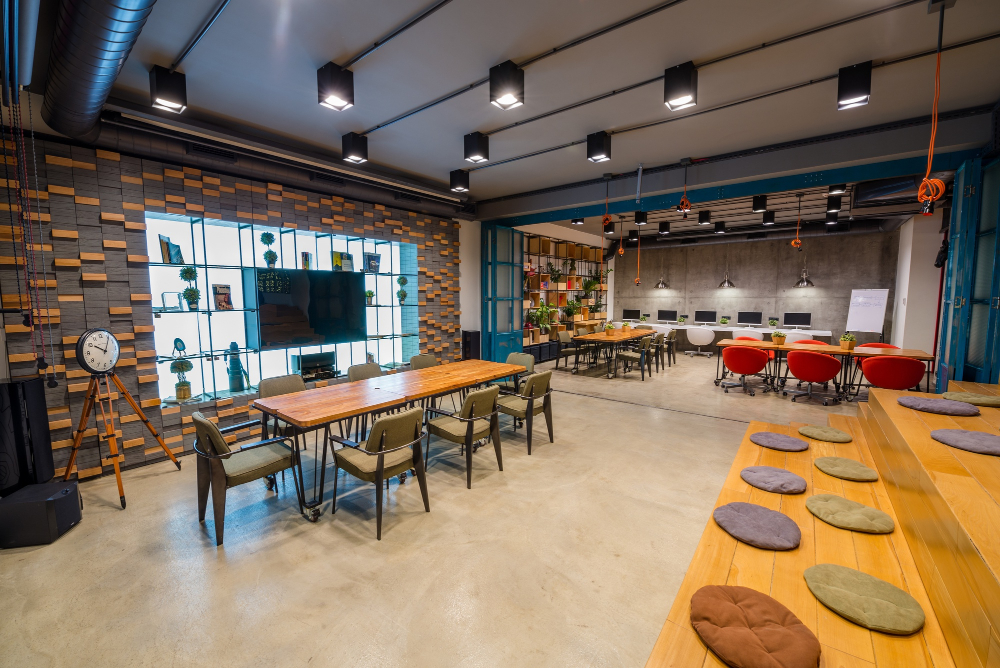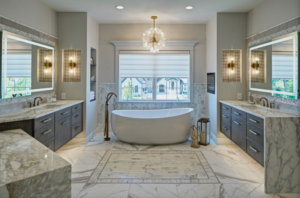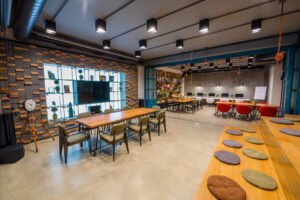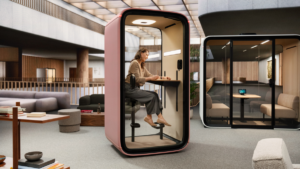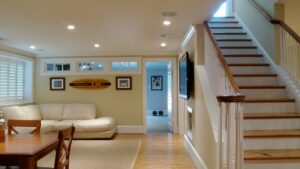When was the last time you walked into your workplace and felt truly inspired? If you had to think about it, it might be time for a change. Commercial remodeling isn’t just about new paint and furniture, it’s about breathing new life into your space, boosting morale, enhancing customer experience, and increasing your property value.
Think of your business space as the stage where your brand performs. The better the stage looks and feels, the better your performance and perception will be. Whether you’re a small office, a buzzing retail store, or a multi-unit commercial building, remodeling can bring major rewards.
Let’s dive into how you can transform your space with practical, modern, and smart remodeling ideas that make sense.
1. Why Commercial Remodeling Matters
Commercial remodeling is more than a cosmetic upgrade; it’s a strategic investment. A well-designed space can attract more customers, retain employees, and increase overall productivity. In today’s competitive environment, first impressions matter. A dated or dysfunctional layout can quietly hurt your bottom line. Remodeling gives your brand a chance to shine in a space that reflects your values, mission, and innovation.
2. Assessing Your Current Business Space
Before you grab a sledgehammer, take a moment to assess. What’s working? What’s not? Are employees cramped? Are customers lingering or leaving quickly? An honest evaluation reveals what needs change. Think of it like a check-up for your space. Use feedback from staff and clients to shape your remodeling plan.
3. Smart Office Renovation Ideas
Renovating your office? Here are smart changes to consider:
- Open Layouts with Quiet Zones: Foster collaboration while offering retreat spaces.
- Ergonomic Furniture: Comfortable employees are productive employees.
- Natural Lighting: Bright, sunlit spaces reduce eye strain and boost mood.
- Flexible Work Areas: Spaces that serve multiple purposes are more cost-effective.
Smart office design isn’t just about looks, it’s about how a space feels to work in.
4. Retail Store Redesign Strategies
In retail, design can make or break the sale.
- Flow and Navigation: Guide customers naturally through your store.
- Feature Walls and Display Areas: Showcase high-margin or new products.
- Lighting and Ambiance: Set the mood and make products pop.
- Mobile Checkout Areas: Reduce lines and improve customer satisfaction.
Retail remodeling is like setting a stage for your products to perform at their best.
5. Workspace Optimization Techniques
Every square foot counts literally. Optimize your layout by:
- Using Vertical Space: Shelving and wall-mounted systems save room.
- Decluttering: Keep only what’s necessary; everything else goes.
- Shared Zones: Combine break areas with collaboration corners.
You wouldn’t keep broken tools in a toolbox and treat your space with the same mindset.
6. Designing for an Enhanced Client Experience
Client-facing areas should radiate warmth, trust, and professionalism.
- Reception Areas: Comfortable seating, calming colors, and a strong brand presence.
- Meeting Rooms: Equipped with modern tech and acoustics for clear communication.
- Restrooms and Waiting Areas: Clean, stylish, and well-lit spaces make a big impression.
Your space speaks before you say a word make sure it says something good.
7. Productivity-Boosting Layouts
Good design = good work. Try these layout tweaks:
- Zoning: Create areas for focus, collaboration, and relaxation.
- Noise Control: Add acoustic panels or soft materials to absorb sound.
- Green Spaces: Add indoor plants to reduce stress and increase creativity.
Think of your layout like a well-conducted orchestra; each section has a purpose, but together, they’re powerful.
8. Modern Upgrades with Sustainable Materials
Sustainability isn’t just a trend, it’s a responsibility.
- Recycled Flooring and Wall Panels
- Low-VOC Paints: Healthier for air quality.
- LED Lighting: Long-lasting and energy-efficient.
- Smart HVAC Systems: Improve comfort and lower costs.
Eco-conscious design choices show that your brand cares about the planet and your employees.
9. Smart Technology Integration
Incorporate smart tech to future-proof your space:
- Smart Thermostats and Lighting: Save energy and personalize comfort.
- Automated Entry Systems: Improve security and convenience.
- Wireless Charging and Integrated Workstations: Keep clutter at bay.
Smart remodeling meets tech-savvy solutions perfect for the modern business.
10. Functional and Stylish Interiors
Balance function with beauty.
- Neutral Bases with Bold Accents: Keeps things timeless yet unique.
- Durable Materials: Invest in finishes that can handle high traffic.
- Custom Branding Elements: Wall graphics, logos, and color schemes that reinforce your identity.
You can have both style and substance; it just takes planning.
11. The Role of Commercial Design-Build Services
Design-build services offer a seamless remodeling experience from concept to completion. Instead of juggling multiple contractors, you get one team responsible for everything. This approach often leads to:
- Fewer delays
- Better communication
- More cohesive designs
It’s like hiring a wedding planner but for your workspace.
12. Planning for Strategic Commercial Renovation
Jumping into renovation without a plan is a recipe for chaos. Here’s how to plan smartly:
- Set Clear Goals: What do you want to achieve more space, better flow, modern look?
- Budget Wisely: Leave room for surprises.
- Timeline Management: Choose low-traffic periods for construction.
Think of your plan as the blueprint to your business’s future success.
13. Boosting Property Value through Remodeling
Even if you’re not selling, increasing your property’s value is a smart move. Upgrades like energy-efficient systems, modern finishes, and tech-ready spaces make your property more attractive to buyers or tenants down the line.
Your workspace isn’t just a cost it’s an asset.
14. Tenant Improvement Projects Explained
Tenant improvement (TI) projects are custom renovations done to suit a business tenant’s specific needs. Whether you’re the landlord or the lessee, TI projects can help:
- Attract quality tenants
- Improve lease renewals
- Enhance usability for business operations
Well-executed TI projects are a win-win for both sides.
15. Final Thoughts on Business Space Remodeling
A smart commercial remodeling project goes far beyond a simple facelift it’s a strategic transformation that redefines how people work, shop, and connect within your business environment. Whether your vision is to boost productivity, enhance aesthetics, embrace sustainability, or achieve all these goals, intentional design is the cornerstone of success.
Your commercial space is a powerful narrator of your brand’s story. Make sure it’s a compelling narrative that invites customers in and inspires your team. Ready to reshape your business’s future? Contact Dennis Ngai Corp today to begin your smart remodeling journey!
FAQs
1. What is commercial remodeling and why is it important?
Commercial remodeling refers to renovating business spaces to improve function, appearance, and value. It enhances client experience, boosts productivity, and keeps your brand competitive.
2. How much does commercial remodeling typically cost?
Costs vary widely depending on size, scope, and materials, but a basic remodel may start at $50–$100 per square foot. High-end renovations with tech integrations can go much higher.
3. How long does a typical office renovation take?
Small remodels can take 2–4 weeks, while full renovations may last several months. Planning, permitting, and materials also affect the timeline.
4. What’s the difference between tenant improvement and remodeling?
Tenant improvements are specific to a tenant’s needs and usually negotiated in a lease. General remodeling is more comprehensive and often initiated by property owners.
5. Can I remodel my business while staying open?
Yes, with smart planning. Phased remodeling or after-hours work allows many businesses to continue operations during renovations.
